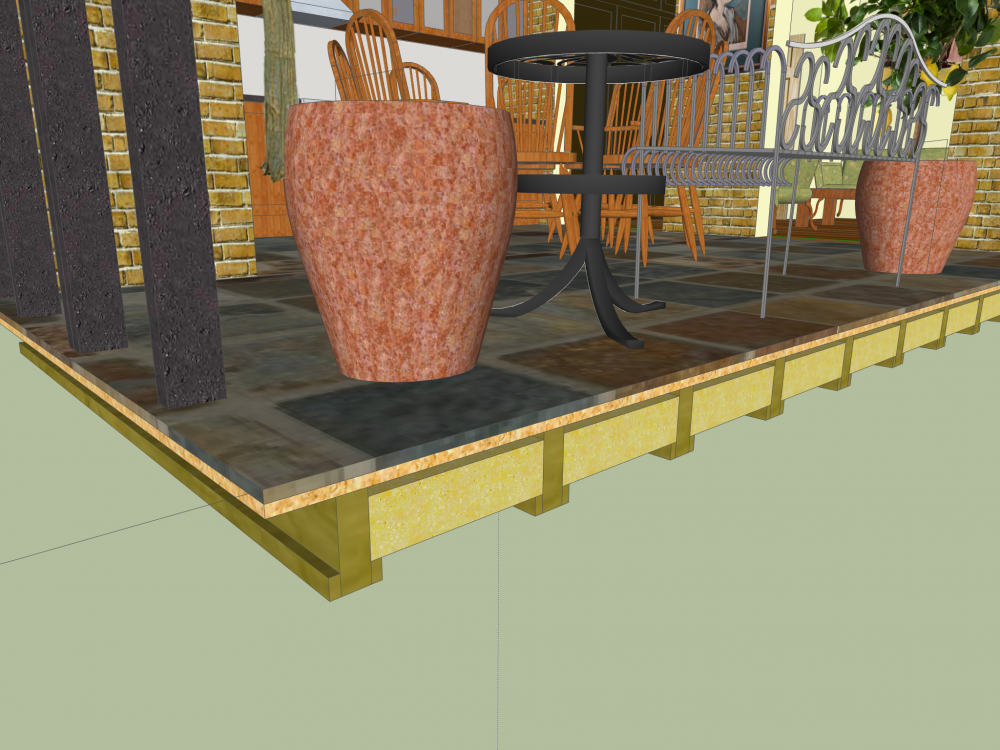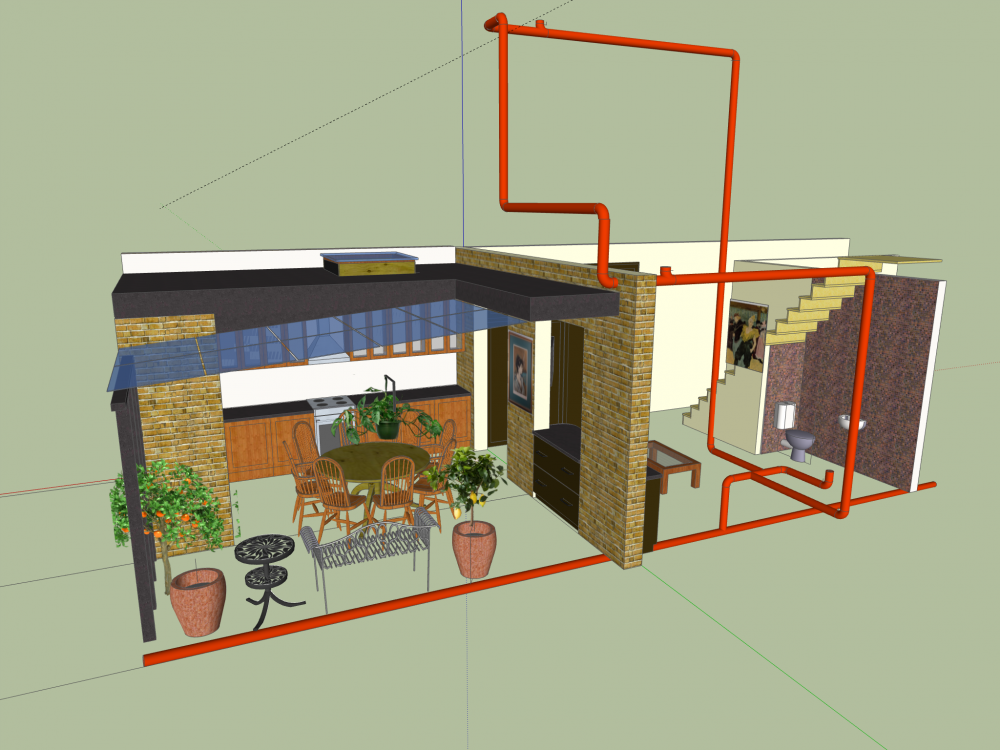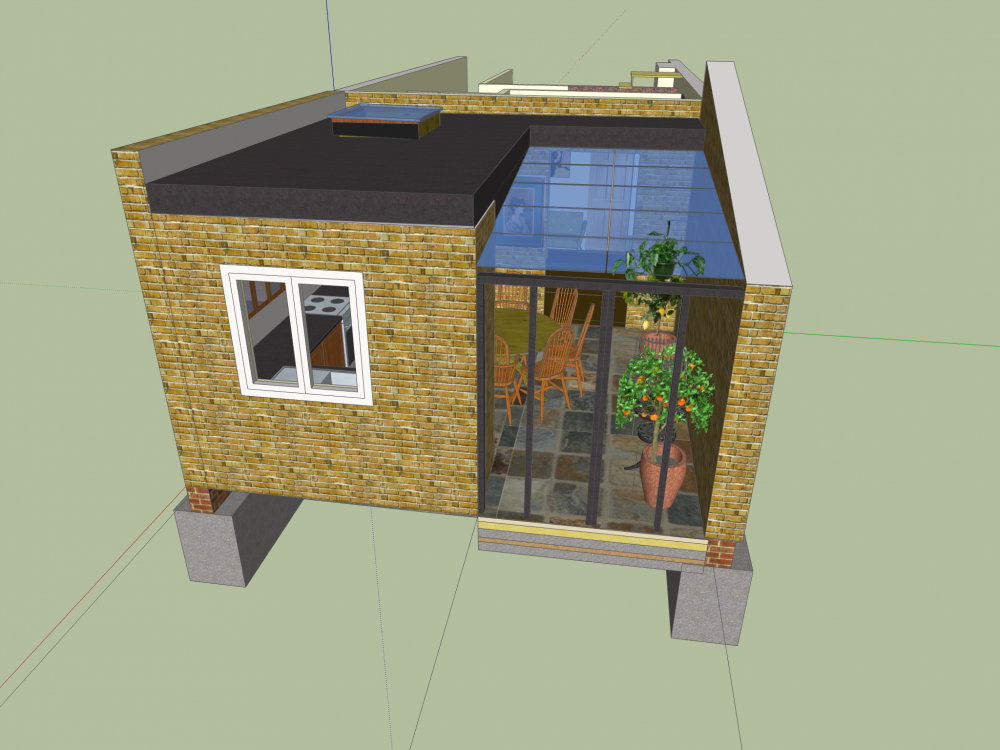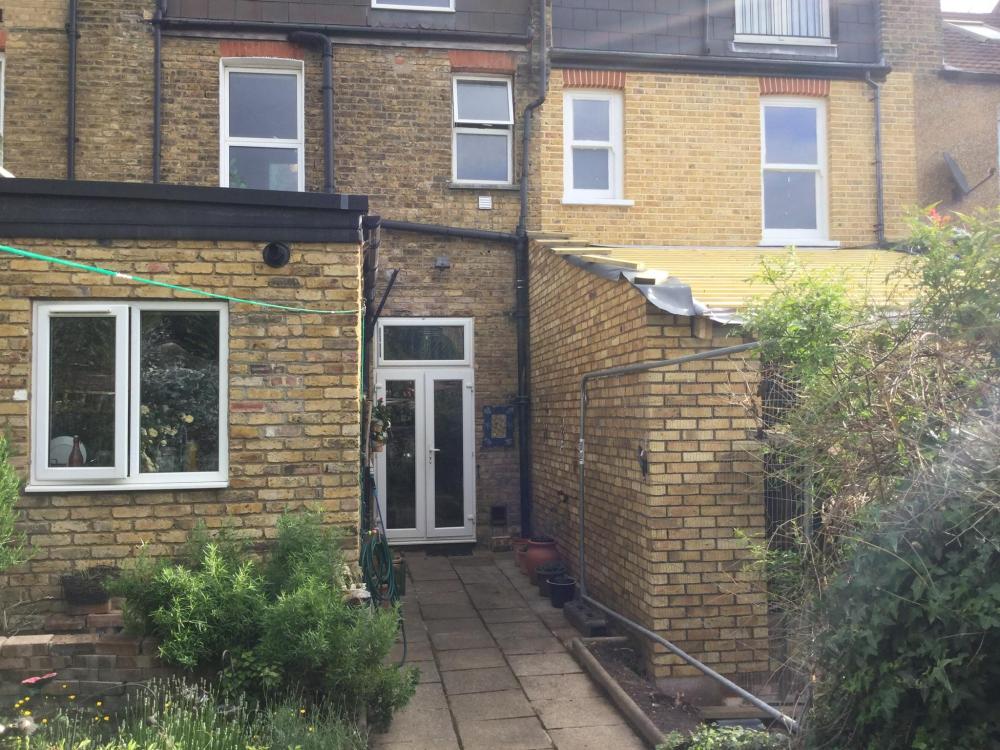
Adam Smith
Members-
Posts
14 -
Joined
-
Last visited
Recent Profile Visitors
The recent visitors block is disabled and is not being shown to other users.
Adam Smith's Achievements

Member (3/5)
1
Reputation
-
Easiest, Simplest, Cheapest Type Of Flooring
Adam Smith replied to Adam Smith's topic in House Extensions & Conservatories
Thanks to everyone who replied to this topic. Having considered this I think the best choice is wooden joists with OSB and tiles. My main considerations are – I want to do it all myself and I don’t have the money or the strength to start moving tons of spoil/hard-core. The minimum depth of concrete would be something like 450 mm, so that somehow I would have to order skips, which costs a fortune in London. If I had 6 inch joists then I could fit the insulation and UFH between the joists and the total depth would be about 250 mm, which I could achieve by spreading everything around. Tiling on top of wood can work out very well. If I have concrete I would need a pour of oversight and another pour of screed, during which I would need another couple of guys helping. The thing about concrete is that you can’t change your mind. You have to get the level right first time and it’s difficult and expensive to break up and get rid of. With wooden joists and OSB I could manage it on my own and work at my own pace. I can always decide to poke a water pipe or an electrical cable underneath at a later stage. Over such a small area I can make a wooden floor as firm as you like and I can hang the joists off the brick wall. The total kitchen/conservatory floor will end up being a patchwork of three floors - a Victorian floor, a bathroom floor from 20 years ago and whatever I do. As Russell Griffiths was saying, the proper job would be to replace the whole lot - which someone may want to do at a later stage - but since what I am doing is an add-on, there’s no point doing anything too expensive or too permanent. -
Easiest, Simplest, Cheapest Type Of Flooring
Adam Smith replied to Adam Smith's topic in House Extensions & Conservatories
Okay, but the assumption of the measurement is that a temperature difference is maintained either side of the glass by whatever means. If you are saying that convection could make a difference, it could only make a difference by changing the air temperature on one side of the glass – which has already been defined. -
Easiest, Simplest, Cheapest Type Of Flooring
Adam Smith replied to Adam Smith's topic in House Extensions & Conservatories
I don’t know what surface effects you can be referring to here. Heat can only be lost to conduction, convection or radiation. All these will be rolled up into the U-value. A much more likely caveat is the degradation of the seal and leakage of the argon over time. I wouldn’t be surprised if the glass has to be replaced every few years – but it’s very difficult to get reliable information. -
Easiest, Simplest, Cheapest Type Of Flooring
Adam Smith replied to Adam Smith's topic in House Extensions & Conservatories
Okay - Double glazing with low emissivity glass (with argon gas cavity) U value = 1.5?? w/m2K. Total area of glass on the roof and front two doors – 12 m². Assume the heat loss to the sides and floor is negligible. Assume a 20° C differential on a cold day. Total heat loss is 1.5 X 12 X 20 = 360W. You could do that with quite a small radiator. Wickes quotes a 1200 mm x 600 mm radiator as 2332 W. At 15p per kilowatt hour my glass would add about 5p per kilowatt hour to run in the worst of weather - £1 per day. -
Easiest, Simplest, Cheapest Type Of Flooring
Adam Smith replied to Adam Smith's topic in House Extensions & Conservatories
Thanks, I guessed as soon as I pressed the send button. -
Easiest, Simplest, Cheapest Type Of Flooring
Adam Smith replied to Adam Smith's topic in House Extensions & Conservatories
Sorry, what is UFH? The floor in the kitchen will be a combination of the floor put down over 100 years ago – the extension used to be a wash house – and some flooring due to an extension put on about 20 years ago – before we bought the house. For the avoidance of doubt, the original houses were built with a wash house, which was extended about 20 years ago to make a toilet/Shower for an old lady who could no longer get up the stairs. I would love to have all the floors the same, but that would be major work! What I am planning could be done for a few thousand pounds and most people couldn’t tell the difference . -
Easiest, Simplest, Cheapest Type Of Flooring
Adam Smith replied to Adam Smith's topic in House Extensions & Conservatories
You’re right – the toilet in the loft is the biggest problem to deal with – but I’m having good ideas all the time. I imagined an intermediary stage in which I would take the drain from the loft down to join up with the toilet on the first floor, which would drain internally. It might be possible, as I’ve shown in the drawing here, to take the drain from the loft toilet to the middle of the house and bring it down by the stairs – I’m still thinking about it. -
Easiest, Simplest, Cheapest Type Of Flooring
Adam Smith replied to Adam Smith's topic in House Extensions & Conservatories
I can’t imagine why moving the drain would be difficult. The lid is in front of the French doors. The stack coming down in the corner goes into the drain and it is also fed by the kitchen sink, which is behind the window to the left. I plan to move the stack in doors, like the houses to the left and right. The drain goes straight out to the front of the house. I have already driven a connection down through the middle of the house – where we have a toilet. -
Easiest, Simplest, Cheapest Type Of Flooring
Adam Smith replied to Adam Smith's topic in House Extensions & Conservatories
-
Easiest, Simplest, Cheapest Type Of Flooring
Adam Smith replied to Adam Smith's topic in House Extensions & Conservatories
Thanks. Could you elaborate on this first bit – what is MOT? Are you saying a hard-core with a sand blinding and the only concrete is the screed on the top? Could I do this all myself? Could they pump the screed from the front to the back of the house? -
Easiest, Simplest, Cheapest Type Of Flooring
Adam Smith replied to Adam Smith's topic in House Extensions & Conservatories
I don’t know if this is true, but it would be impossible to enforce. I could connect under floor heating and disconnected it at will. There is no way a building inspector would even know that it’s there . -
Easiest, Simplest, Cheapest Type Of Flooring
Adam Smith replied to Adam Smith's topic in House Extensions & Conservatories
The wall is on the Boundry and it is agreed that either side can share it. -
I have a Victorian terraced house in London W4 and I want to fill in the L shape of the ground floor so as to create an extension/conservatory. I want to emphasise the conservatory aspect so that I don’t have to apply for planning permission and building control, but I want to have a good, solid floor with insulation and under floor heating. The area to be filled in is 5 m long by 2 m wide with solid foundations to either side. The ground is 250 mm below the floor level inside the house. At the moment there is an inspection chamber for the drain, but I want to get rid of this and have a rodding eye outside the new conservatory. I would like to be able to do it all myself. What is the cheapest, least hassle way of doing it? Thanks.
-
Hi, my name is Adam and I have a degree in Electrical engineering and 35 years experience as a designer of radar, mobile phones, equipment to help aircraft land and lots of stuff the average guy in the street wouldn’t have heard about. I am also an enthusiastic builder with quite a lot of experience of the various skills. Don’t know a lot about foundations – which I have heard people say is the most difficult. I can answer most questions about electricity, but there may be some aspects of building practice that I am unaware of.





